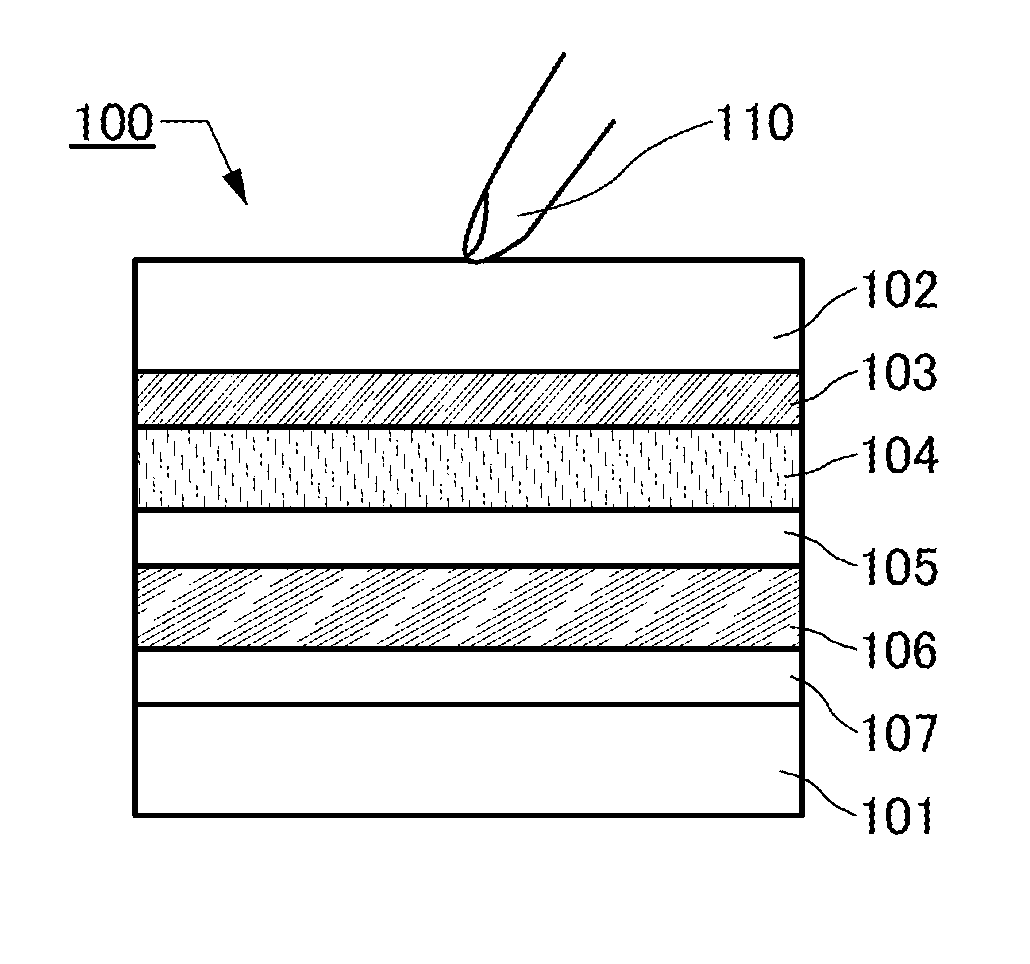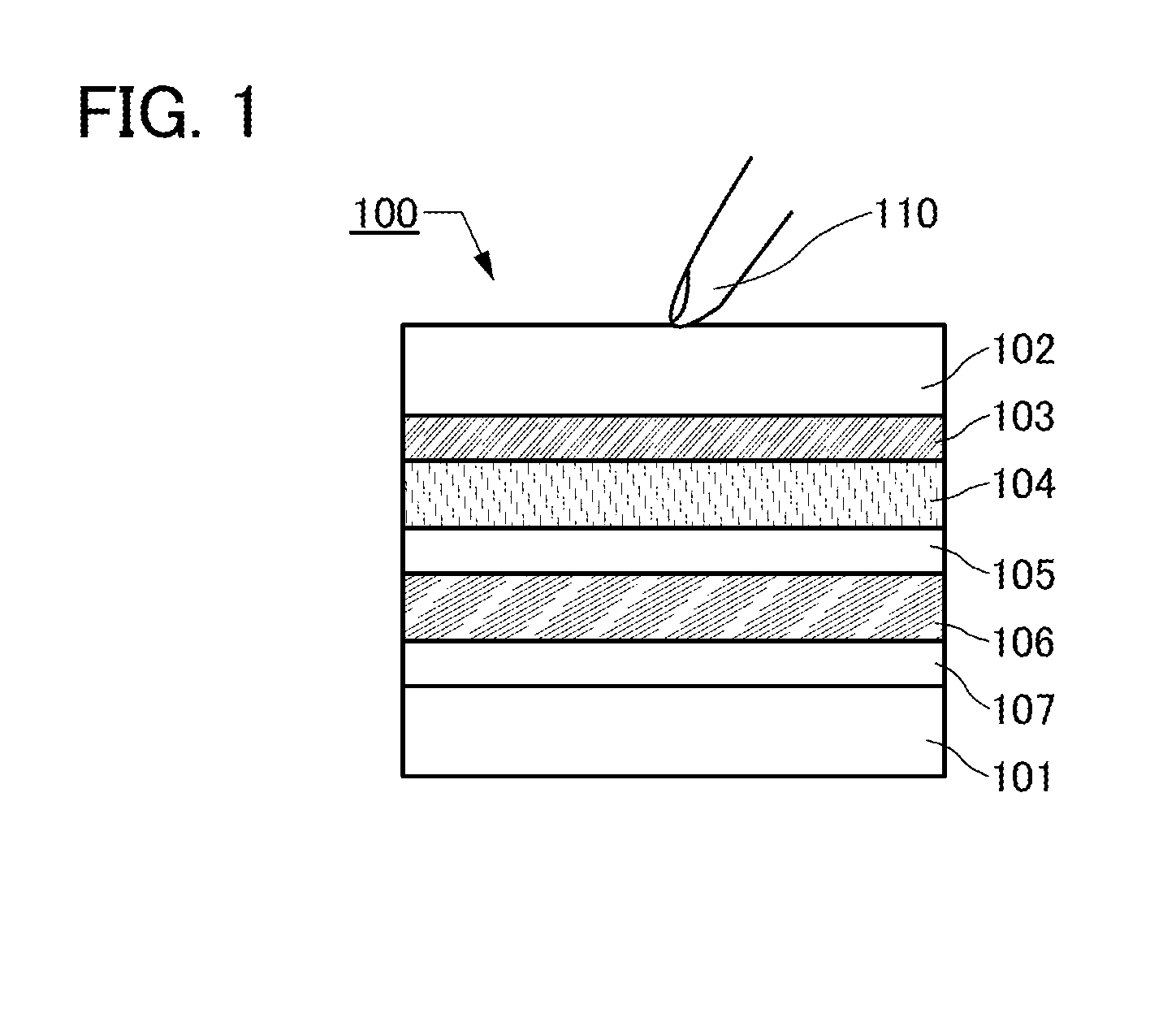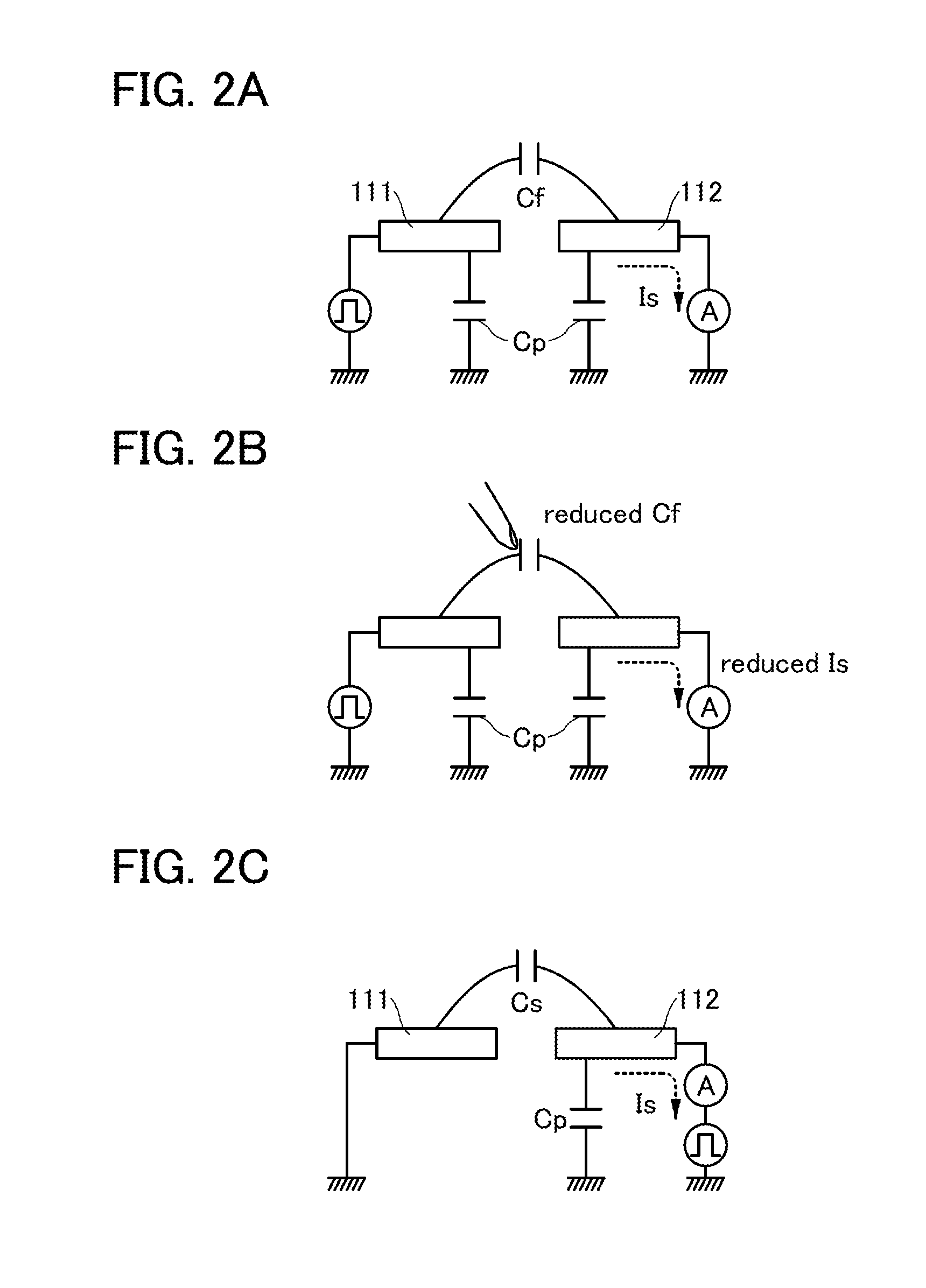Display device
- Summary
- Abstract
- Description
- Claims
- Application Information
AI Technical Summary
Benefits of technology
Problems solved by technology
Method used
Image
Examples
embodiment 1
[0040]In this embodiment, a structural example of a display device according to one embodiment of the present invention is described with reference to drawings.
[0041]FIG. 1 is a schematic view of a display device 100 exemplified in this embodiment. The display device 100 includes a first substrate 101 and a second substrate 102. Between the first substrate 101 and the second substrate 102, a TFT layer 107, a display element layer 106, a color filter layer 105, a stress relief layer 104, and a sensor layer 103 are stacked in this order from the first substrate 101 side.
[0042]The TFT layer 107 includes a transistor, a wiring, and the like for driving the display element layer 106. Note that in the case of a passive matrix display device, a transistor is not necessary, and only a wiring and an electrode are provided.
[0043]The display element layer 106 includes a plurality of display elements. Each of the display elements includes at least a pair of electrodes. As the display element, t...
application example
[0059]An example where a liquid crystal element is applied to the display element included in the display element layer 106 and an example where a light-emitting element is applied to the display element included in the display element layer 106 are described below.
[0060]A display device 120 illustrated in FIG. 3A is different from the display device 100 illustrated in FIG. 1 in that a liquid crystal element layer 121 is used instead of the display element layer 106 and a polarizing plate 122, a polarizing plate 123, and a protective substrate 124 are used.
[0061]The liquid crystal element layer 121 includes a liquid crystal element provided with a pair of electrodes and a liquid crystal. As the liquid crystal, a thermotropic liquid crystal, a low molecular liquid crystal, a high molecular liquid crystal, a ferroelectric liquid crystal, an anti-ferroelectric liquid crystal, or the like can be used. Moreover, a liquid crystal exhibiting a blue phase is preferably used because an align...
embodiment 2
[0077]In this embodiment, as an example of a method for manufacturing a display device of one embodiment of the present invention, an example of a method for manufacturing a display device in which a liquid crystal element is used is described with reference to drawings.
Example of Manufacturing Method 1
[0078]First, a TFT layer 107 is formed over the first substrate 101 (see FIG. 5A).
[0079]The first substrate 101 is formed using a material having an insulating surface and having light-transmitting properties to visible light. A glass material, a resin material, or the like can be used for the material of the first substrate 101. Further, when the display device is used with being curved, a flexible resin material, a glass material that is thin enough to have flexibility, or a composite material or a laminated material of these materials is used for the first substrate 101.
[0080]The TFT layer 107 includes at least a transistor. The TFT layer 107 may include a capacitor in addition to ...
PUM
 Login to View More
Login to View More Abstract
Description
Claims
Application Information
 Login to View More
Login to View More - R&D
- Intellectual Property
- Life Sciences
- Materials
- Tech Scout
- Unparalleled Data Quality
- Higher Quality Content
- 60% Fewer Hallucinations
Browse by: Latest US Patents, China's latest patents, Technical Efficacy Thesaurus, Application Domain, Technology Topic, Popular Technical Reports.
© 2025 PatSnap. All rights reserved.Legal|Privacy policy|Modern Slavery Act Transparency Statement|Sitemap|About US| Contact US: help@patsnap.com



